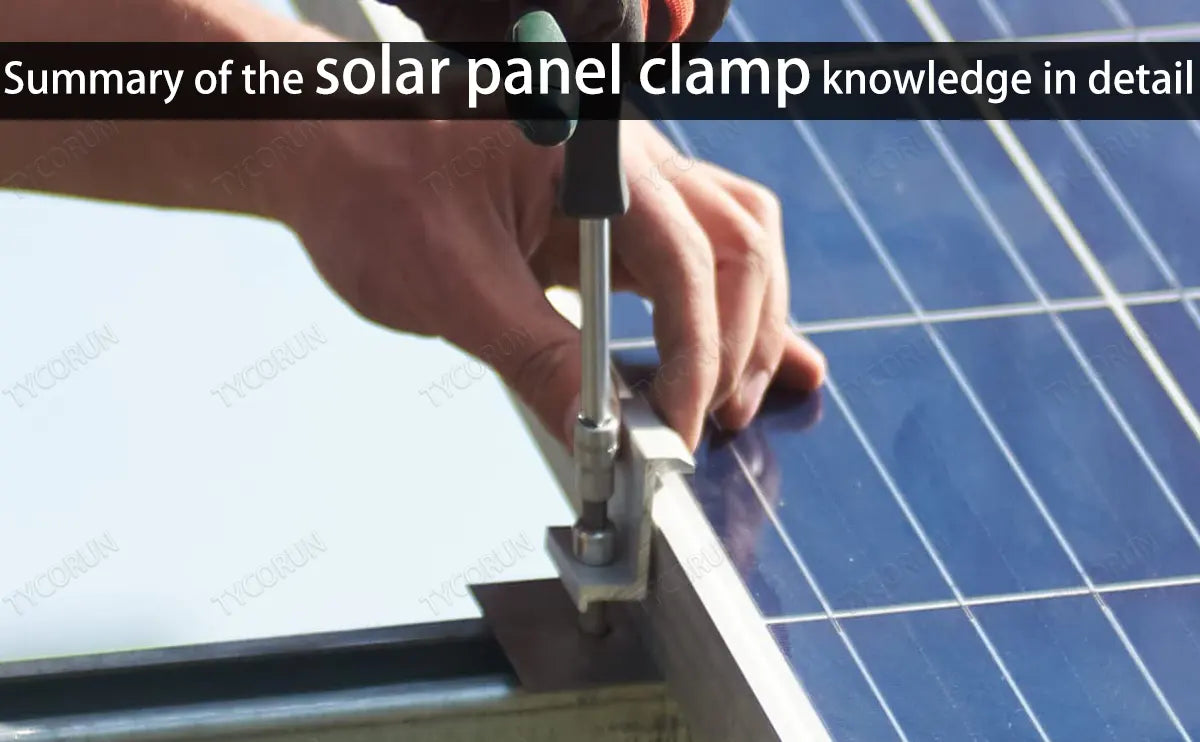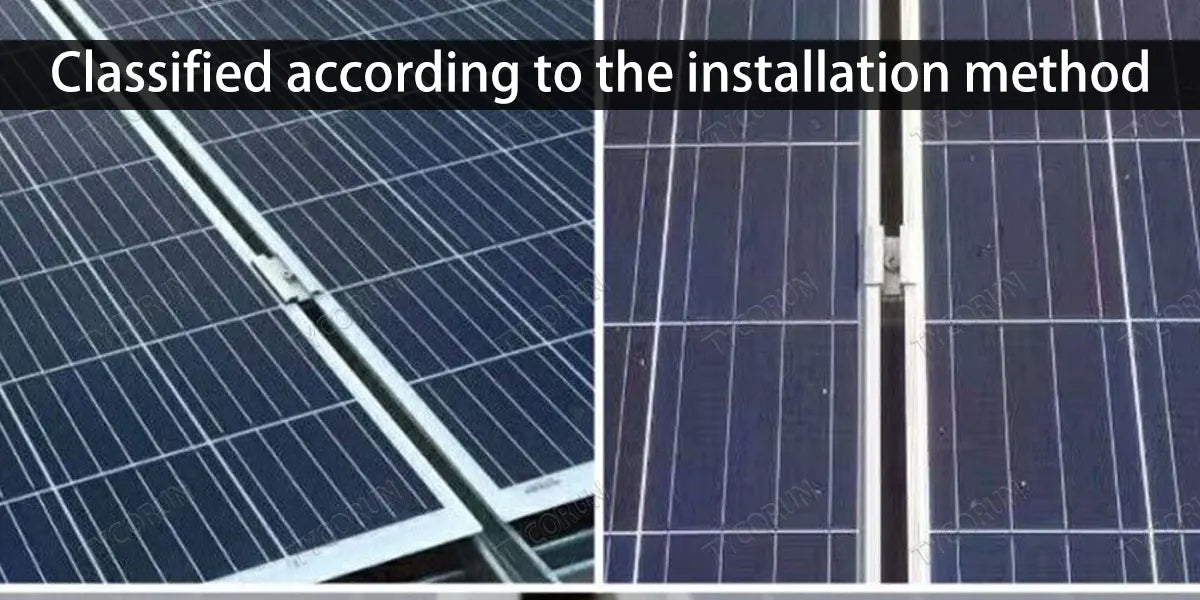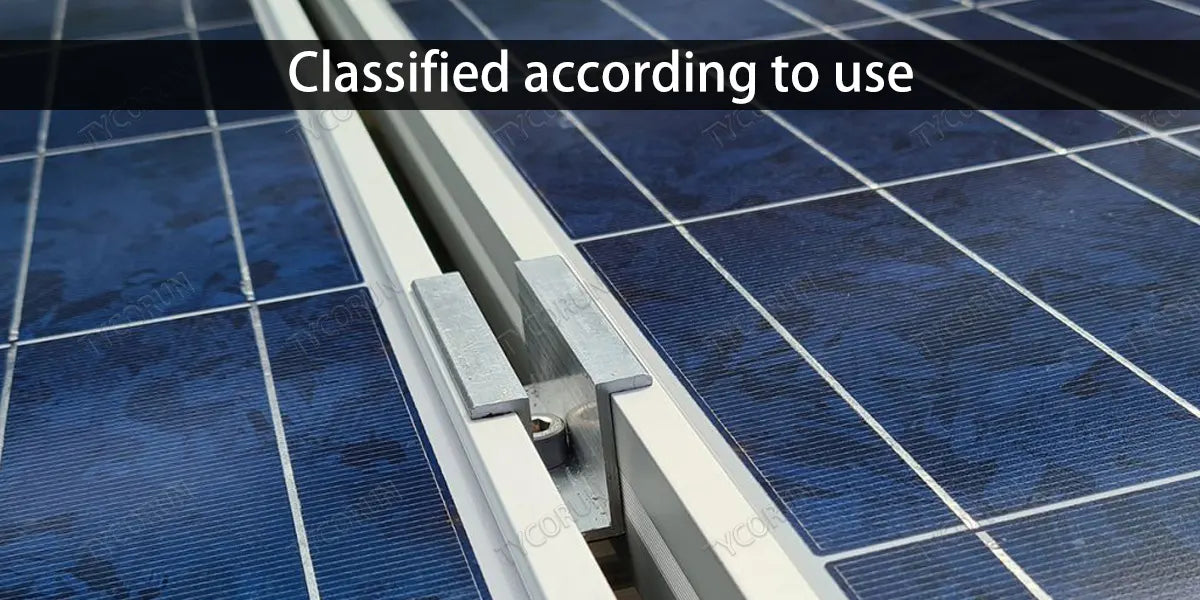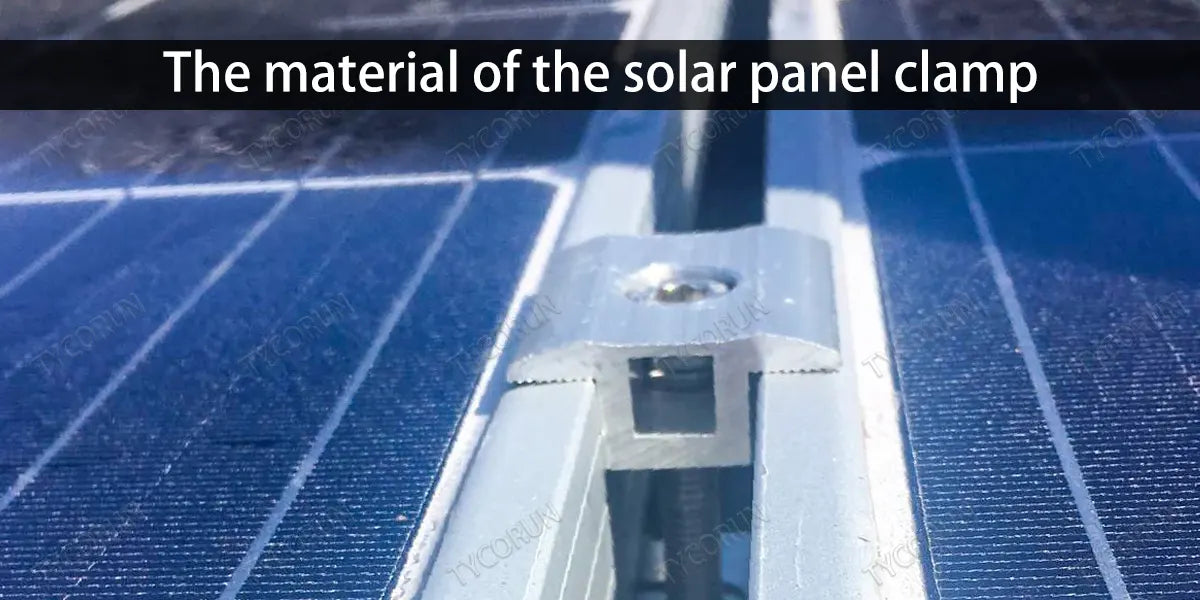
Main content:
1. What is a solar panel clamp
Solar panel clamp refers to the tools and equipment used to install and fix photovoltaic module. It is a very important component of a solar photovoltaic power generation system.
The selection and use of solar panel clamp plays a very important role in the installation and operation of photovoltaic systems. The following summarizes the relevant knowledge points of solar panel clamp.
2. Classification of solar panel clamps
① Classified according to the installation method
According to the different types and installation methods of solar PV modules, PV clamps can be divided into ground mounting clamps, roof mounting clamps, inclined plane mounting clamps, etc.
- Ground-mounted clamps
Ground mounting clamps are mainly used for the installation of large-scale photovoltaic power plants. It can be fixed with ground screws or a cement foundation, allowing PV modules to be securely installed on the ground. Ground mounting clamps are generally made of steel or aluminum alloy materials, which have high strength and corrosion resistance.
- Roof mounting clamps
Roof mounting clamps are mainly used to install photovoltaic modules on rooftops. Factors such as roof structure and materials, wind and snow loads after installation, need to be taken into account. Roof installation clamps generally need to have good waterproof performance and adapt to the characteristics of various roof structures.

- Angled mounting clamps
The inclined plane mounting bracket is mainly used to install photovoltaic modules on the inclined plane. Factors such as the slope and material of the inclined plane, as well as wind and snow loads after installation, need to be taken into account. Inclined mounting clamps generally need to be easy to install, durable, and corrosion-resistant.
② Classified according to use
Solar panel clamps are an important auxiliary tool for installing photovoltaic panels. It is able to effectively hold photovoltaic panels and connect mounting brackets. Depending on the application, PV clamps can be divided into the following four types.
- Ordinary type clamp
It is the most basic solar panel clamp and is mainly used to fix photovoltaic panels and connect with the mounting bracket. This type of PV clamp is simple in structure, easy to use, and relatively inexpensive, making it an ideal choice for small-scale PV power plant projects.
- Professional clamps
Professional clamp is a more complex type of solar panel clamp. It is suitable for the installation of large-scale photovoltaic power plants, which can effectively reduce the installation time and cost.
This type of PV clamp requires highly specialized skills and experience. Because it needs to be accurately docked with 12v 100ah lithium ion batteries and mounting brackets, extremely high accuracy is required both horizontally and vertically.
- Adaptable clamps
Adaptive clamps are also an important type of PV clamps. Its role is to adapt different types of photovoltaic panels to different mounting brackets. This kind of clamp can greatly reduce the difficulty of installation and can well adapt to the needs of most photovoltaic power plants.

- Automated clamps
It is an automated clamp, which integrates computer control, visual recognition, robotics and other technologies, and can seamlessly connect the 12 volt 200ah lithium battery and mounting bracket to complete the installation process completely automatically. Automated clamps can not only improve installation efficiency, but also reduce human error and installation costs.
To sum up, according to different PV installation needs, we can choose different types of PV clamps. However, no matter which type of clamp we choose, we need to pay attention to the selection of products with guaranteed quality, and summarize the advantages and disadvantages of different models in practice in order to better meet our photovoltaic installation needs.
3. The material of the solar panel clamp
- Aluminum alloy material
Aluminum alloy material is one of the most commonly used materials in solar panel clamp. It has the characteristics of good corrosion resistance, light weight and high strength, which can meet the requirements of photovoltaic modules in various environments.
- Stainless steel material
Stainless steel material is also one of the most commonly used materials in solar panel clamp. It has the characteristics of corrosion resistance, high temperature resistance, damage resistance, etc., and is suitable for use in harsh environments such as oceans and deserts.

- Galvanized steel material
The galvanized steel material is mainly used in ground mounting clamps. It has the characteristics of good corrosion resistance and low cost, and is suitable for the installation of large-scale photovoltaic power station.
4. What are the advantages of solar panel clamps
- Easy to install
The design of the solar panel clamp is reasonable, the installation is simple, and it is suitable for the installation needs of different scenarios.
- Durability
The solar panel clamp is made of high-quality materials that have good corrosion resistance, cycle resistance and other properties, and can operate stably for a long time.
- Easy maintenance
PV clamps are easy to maintain and can extend their service life through regular inspections, cleaning and maintenance.
5. How to install a solar panel clamp
- Preparation before installation
Before installing a PV clamp, PV modules and brackets must be inspected to ensure that they meet the installation requirements. At the same time, it is necessary to measure the size of the installation position and confirm the fixing method. It is also necessary to calculate wind and snow loads and select the appropriate clamps.

- Installation process
During the installation process, the installation instructions of the clamp should be followed to ensure the tightening force of the bolt and the fixing of the clamp firmly. At the same time, attention must be paid to the balanced installation of the clamp to avoid tilting or instability.
- Post-installation inspection
After installation, the clamp needs to be inspected to ensure that it is firmly installed. At the same time, the installation of photovoltaic modules needs to be inspected to ensure that they are flat, free of cracks, no damage, etc.
The installation of PV clamps requires certain skills and experience, and standard installation procedures must be followed. We need to make preliminary preparations, choose the appropriate clamp and installation method, and comply with the installation and fastening steps and precautions, so as to ensure the quality and efficiency of solar panel clamp installation.
6. How to maintain a solar panel clamp
- Regular check-ups
Regularly inspect the solar panel clamp to ensure that its bolts are tightened, the clamp is not damaged, and the bracket is not deformed, so as to find and solve problems in time.
- Cleaning and maintenance
Regularly clean and maintain the solar panel clamp to remove dust, dirt, etc., to ensure that its surface is smooth and clean, and to prolong the service life.
- Anti-corrosive coating
For solar panel clamp exposed to harsh environments, anti-corrosion coating can be applied to improve their corrosion resistance.
7. Conclusion
As an important part of the photovoltaic power generation system, the selection and use of solar panel clamp plays a very important role in the installation and operation of photovoltaic systems.
Through the summary of the classification, materials, installation, maintenance and advantages of solar panel clamp, we can better understand and apply solar panel clamp, and provide strong support for the installation and operation of photovoltaic power generation systems.
Related articles: top 5 solar panel brackets companies, install solar panel, how to clean solar panel